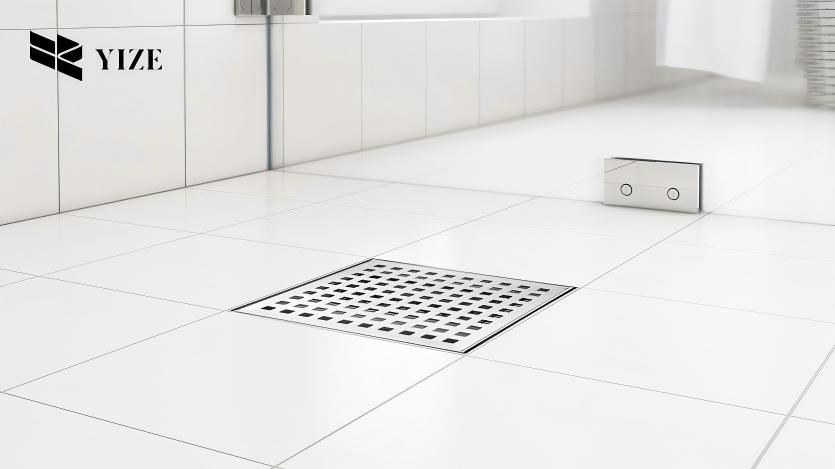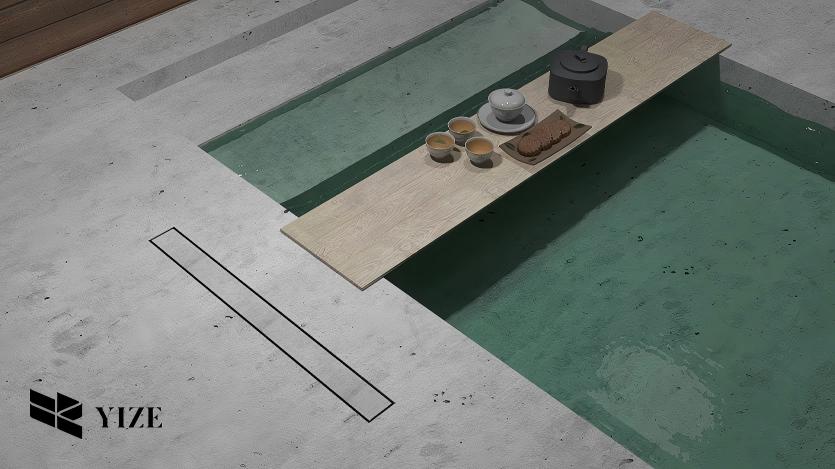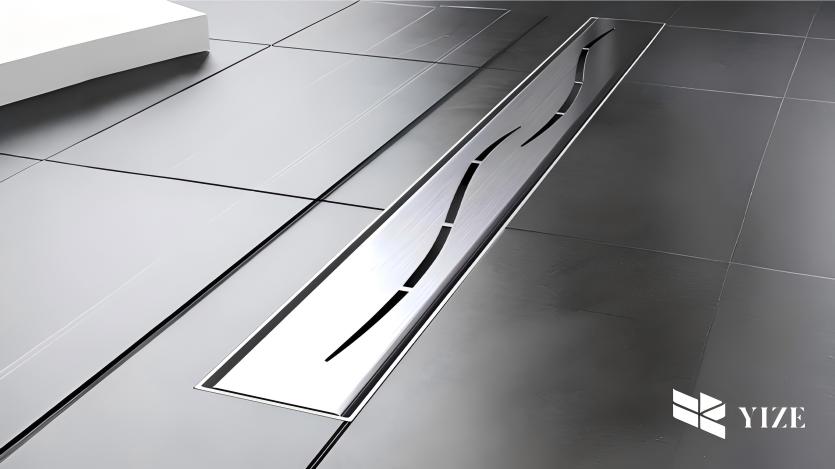
Have you ever stood in a bathroom with water pooling around your feet? Not a great feeling, right? The truth is, a lot of that mess comes down to one thing: choosing the right floor drain size. Yep, it’s not just about style or material; the size of the drain plays a big role in keeping your bathroom clean, dry, and hassle-free.
This guide will help you figure out the optimal floor drain dimensions for your space. You will learn everything if you’re planning a bathroom makeover or building from scratch. Read on to learn more.
I. Why Does Floor Drain Size Matter?
Think of your floor drain as the silent hero of your bathroom. When it’s sized right, water flows away fast. No puddles, no stink, no mess. But when it’s too small or oversized? You may face slow drainage, flooding, or inconvenient plumbing issues later on.
Here’s why floor drain dimension selection is key:
- Prevents standing water
- Supports proper water flow
- Reduces mold and mildew risk
- Improves long-term plumbing performance
So, getting the right size isn’t just nice, it’s necessary!
II. Factors to Consider When Choosing Floor Drain Size
There’s no one-size-fits-all answer. But here are some things you’ll want to think about before settling on your drain size:
1. Bathroom or Shower Size
Larger bathrooms or wet rooms typically require larger or multiple drains. For a small shower stall, a 2- to 4-inch drain might be perfect. But a walk-in, open-concept bathroom? You’ll want something larger or longer, such as a linear drain.
Quick Tip:
- Smaller showers: 2″–4″ round drains work great
- Medium-sized Bathrooms: 4″–6″ square or linear
- Large, open bathrooms: Go with longer linear drains for better flow
2. Water Flow Rate
If your shower or bathtub pumps out a lot of water quickly, a small drain may not be able to keep up with the flow. Always check your fixtures’ water flow rate and make sure the drain can handle it. You don’t want water backing up while you’re trying to relax.
3. Drain Location and Slope
Where is the drain going to sit? In the center, in the corner, or along the wall? This affects your floor slope, which in turn affects the types of floor drains that are even possible.
- Central drains are better suited to square or round covers
- Wall or edge placements usually call for linear drains
No slope = no drainage. So plan this one well!

4. Style and Accessibility
This is where things get a little personal. Do you want your drain to blend in or stand out? If you’re designing a barrier-free or wheelchair-accessible shower, linear drains with wider openings may be your best friend. YZDRAIN offers many customizable options in this category.
III. Standard Floor Drain Sizes: What They Mean
Let’s talk numbers. Here are the most common floor drain sizes and what they’re good for:
- 2-inch drains: Best for small bathrooms or powder rooms
- 3-inch drains: Great for mid-sized spaces and single showers
- 4-inch drains: The sweet spot for most residential bathrooms
- 6-inch or larger: For commercial bathrooms or multi-user spaces
Choosing between round, square, or long linear designs depends on both taste and function. This is where a floor drain sizing guide really comes in handy.
IV. Types of Drains and Their Dimensional Benefits
Every type of floor drain has its own perks when it comes to size:
1. Square or Round Grate Drains
These classic shapes are super easy to install and work well in bathrooms where the drain is placed in the center of the space. Most square or round grate drains come in compact sizes like 2 to 4 inches, making them a great pick for small to medium-sized bathrooms.
2. Linear Drains
Linear drains have that sleek, modern look that many homeowners love. They’re perfect for walk-in showers or large bathrooms because they let you create a single-slope floor, which makes water flow easier and faster. They’re also available in longer sizes to fit wider spaces.
3. Hidden or Tileable Drains
Want a drain that disappears into the floor? Tileable or hidden drains are designed to blend in with your tiles, giving your bathroom a clean, seamless finish. These are great for minimalistic designs and usually come in customizable sizes to suit unique layouts.
For design flexibility and better flow control, linear drains like those offered by YZDRAIN are often considered the best size for bathroom floor drain options.

V. Mistakes to Avoid When Selecting Drain Size
We all make mistakes but when it comes to floor drains, better to avoid them altogether:
- Going too small: Can’t handle water volume
- Forgetting slope: Drain won’t work if floor isn’t angled
- Mismatched pipe size: Your pipe and drain need to work together
- Ignoring design: Your pretty tiles deserve a matching drain size and style
Always double-check measurements and talk to your installer if you’re unsure. That way, your bathroom floor drain size tips don’t go down the drain literally!
VI. Why YZDRAIN Is Your Go-To for Floor Drain Selection
At YZDRAIN, we know how tricky it can be to figure out how to select the right floor drain for your bathroom project. That’s why we make it easy. Our wide range of products includes:
- Custom-sized linear drains
- Anti-odor features
- Tile-in and stainless steel options
- Easy installation systems
Need help choosing? Our team is always here to guide you through the best floor drain options for renovation projects. Whether it’s a big bathroom remodel or a small touch-up, we’ve got your back.
VII. Final Thoughts
When it comes to floor drains, size really does matter. By learning the basics of how to select the right floor drain dimensions, you’re setting yourself up for a cleaner, safer, and smarter bathroom experience.
Take your time, measure twice, and select the right drain based on your space, flow rate, and design requirements. And if you’re ever in doubt, reach out to a trusted supplier like YZDRAIN.
FAQs
Q1: What is the most common floor drain size for bathrooms?
A 4-inch drain is the most popular choice for standard residential bathrooms.
Q2: Can I use a larger drain than necessary?
You can, but make sure your pipes and floor slope are compatible with the drain size.
Q3: How do I match the drain to my shower?
Consider your shower size, water flow rate, and layout. A floor drain sizing guide can help.
Q4: Are linear drains better than round drains?
It depends on your space. Linear drains are great for large or open showers and offer better flow in some designs.
Q5: Do the right floor drain dimensions affect bathroom safety?
Yes! Proper drain size prevents water buildup, which helps reduce slips and mold growth.
